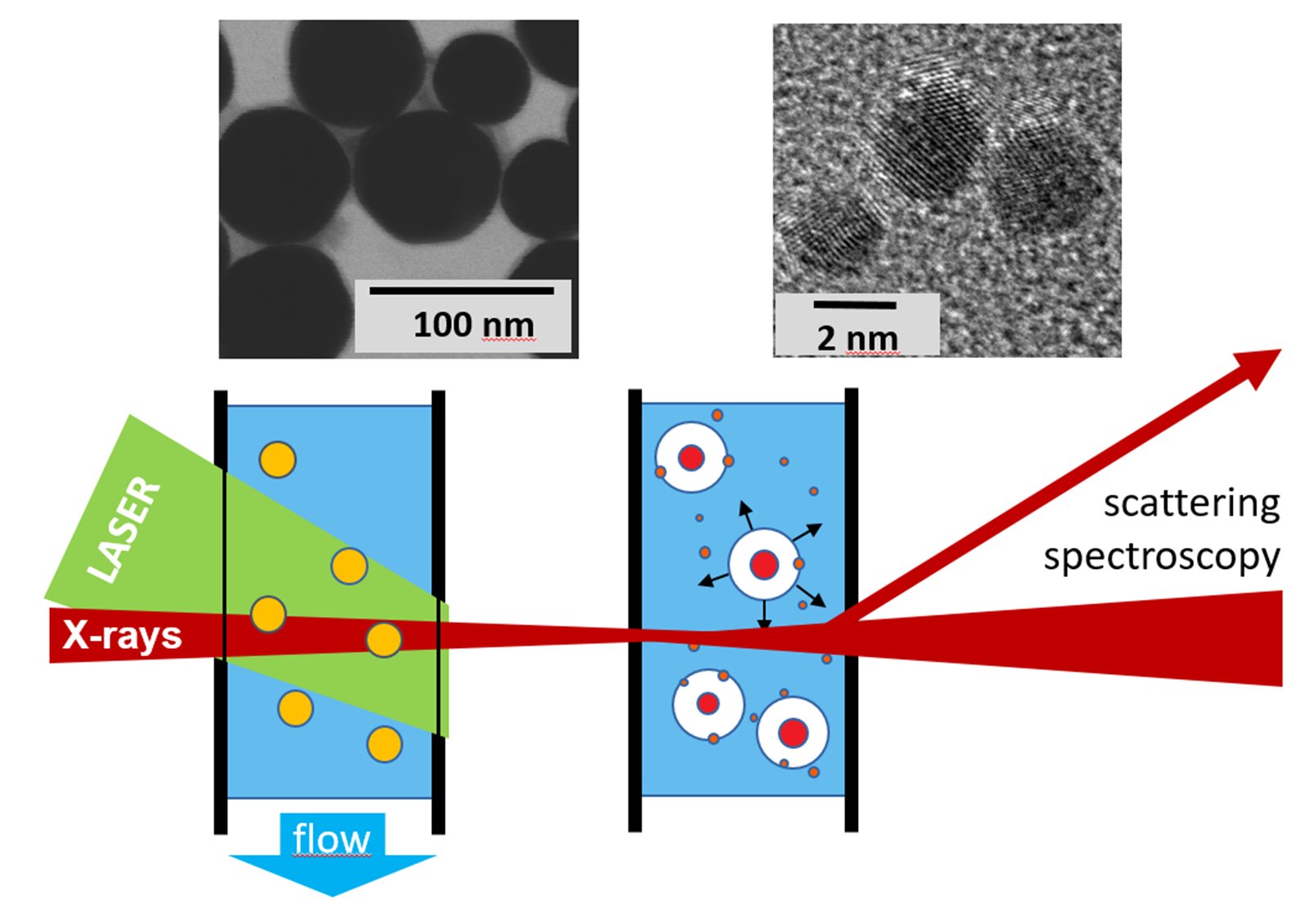UltraFrag: laser fragmentation and cluster stabilization
The laser-based synthesis of high-purity colloidal metal, alloy and oxide nanoparticles and their subsequent adsorption on carrier materials allows flexible material design with a wide range of applications in relevant development technologies such as biomedicine, energy technology, catalysis and additive manufacturing.
Nanoparticle synthesis by pulsed laser ablation in liquids has been established as a valuable synthesis route for functional nanomaterials. However, it has been shown recently that the intrinsic nature of the process is responsible for the production of a broad nanoparticle size distribution. In selected applications, such as catalysis or biophotonics, very narrow size distributions, ideally approaching cluster size, are indispensable.
Understanding of the hierarchical energy and time scales that are involved in various fragmentation mechanisms is essential for predictability. The core challenge is to develop a strategy to disentangle the overlapping of the LFL mechanism and maturation.
|
The current project aims at establishing a second process on the nanoparticle suspension to further fragment the particles to sizes down to 1 nm and stabilize these clusters on an inert carrier. By combining the transient structure elucidation with transient optical spectroscopy and a diffusion-delayed in situ growth suppression of the fragments, the fragmentation mechanisms are to be mapped for the first time decoupled from the maturation. |
|
Fundamental understanding of this process requires the use of ultrafast structural tools, such as pulsed x-ray scattering. In addition to the ability to model and predict laser fragmentation, a first-time description of physicochemical phase transitions and growth of colloidal nanoparticles on short time scales is also sought. These findings should provide irradiation and stability parameters in the application and provide information on high-throughput and energy-efficient processes.
Funding
Ultrafrag is funded by the Deutsche Forschungsgemeinschaft (DFG) under project no.: 491072288
Project partners
- IPS, KIT
- Dr. S. Reichenberger, University Duisburg-Essen
Publications
- In situ structural kinetics of picosecond laser-induced heating and fragmentation of colloidal gold spheres, Ziefuß, A.; Reich, S.; Reichenberger, S.; Levantino, M.; Plech, A., 2020. Physical chemistry, chemical physics, 22, 4993–5001. doi:10.1039/C9CP05202J
- Photoluminescence of Fully Inorganic Colloidal Gold Nanocluster and Their Manipulation Using Surface Charge Effects, Ziefuss, A. R.; Steenbock, T.; Benner, D.; Plech, A.; Göttlicher, J.; Teubner, M.; Grimm-Lebsanft, B.; Rehbock, C.; Comby-Zerbino, C.; Antoine, R.; Amans, D.; Chakraborty, I.; Bester, G.; Nachev, M.; Sures, B.; Rübhausen, M.; Parak, W. J.; Barcikowski, S., 2021. Advanced materials, 33 (31), Art.Nr. 2101549. doi:10.1002/adma.202101549

